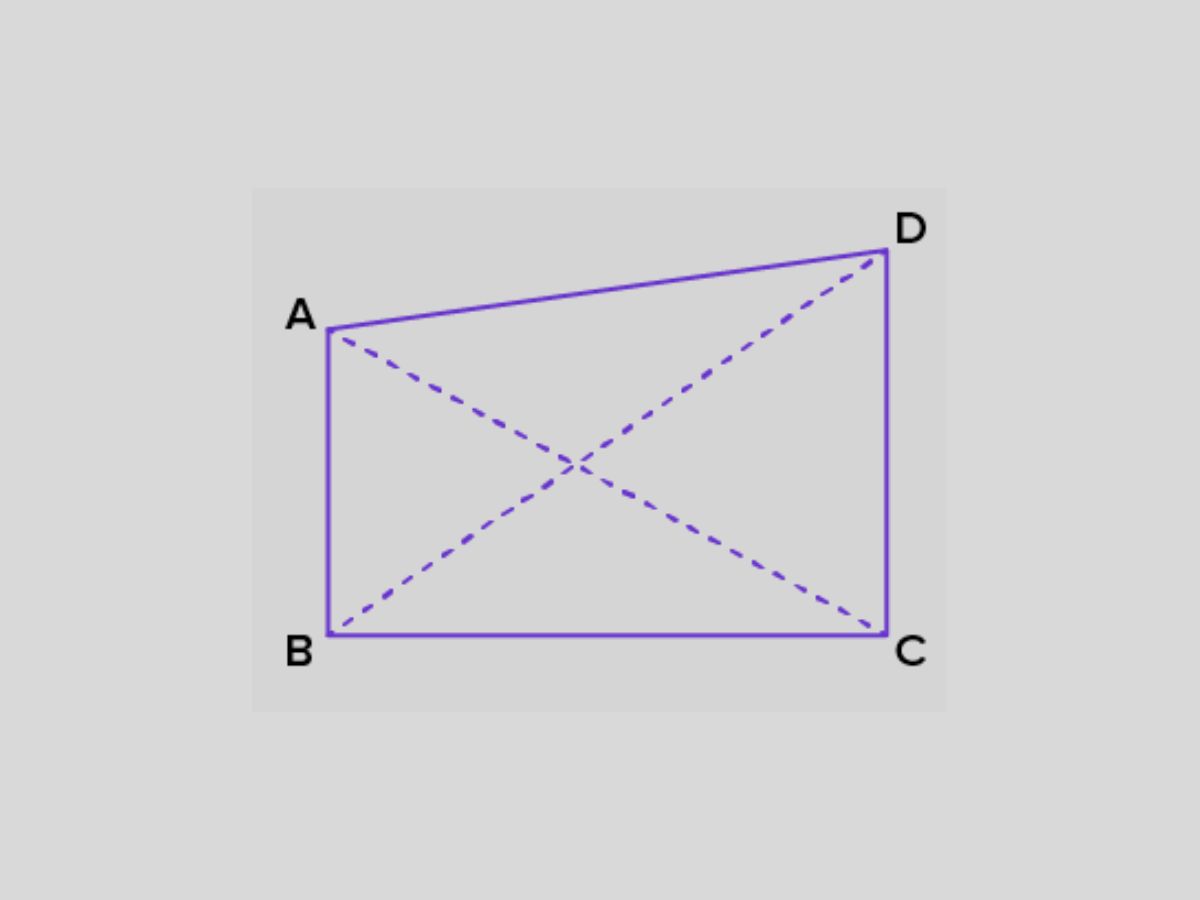
Ever wondered about the secrets behind the shapes you see every day? Quadrilaterals, those four-sided figures that populate geometry textbooks and architectural marvels, are more fascinating than you might think. Quadrilaterals are not just squares and rectangles; they come in a variety of forms, each with its own set of intriguing properties and uses. From the sturdy structure of a bridge to the sleek design of a smartphone screen, quadrilaterals are everywhere, shaping our world in ways we often overlook. Ready to get the lowdown on these geometric gems? Let's dive into the world of quadrilaterals and uncover 30 amazing facts that'll make you see these familiar shapes in a whole new light.
Understanding Quadrilaterals
Quadrilaterals, shapes with four sides, are everywhere around us, from the pages of a book to the screen of your smartphone. But what makes them so special and diverse? Let's dive into some fascinating facts about these four-sided figures.
-
Quadrilaterals are categorized into several types based on their side lengths and angle measurements. Common types include squares, rectangles, trapezoids, and parallelograms.
-
Every quadrilateral has a total internal angle sum of 360 degrees, no matter the type. This is a fundamental property that helps in understanding and solving problems related to these shapes.
-
Squares are the most symmetrical type of quadrilateral. They have four equal sides and four right angles, making them both a specific type of rectangle and a parallelogram.
The Unique Traits of Quadrilaterals
-
A rhombus is a quadrilateral with all sides of equal length but, unlike a square, does not generally have all angles equal. It's often referred to as a diamond shape.
-
Trapezoids (or trapeziums in British English) have a unique feature: only one pair of parallel sides. This distinguishes them from parallelograms, which have two pairs of parallel sides.
-
The parallelogram has opposite sides that are parallel and equal in length. This shape also has opposite angles that are equal, making it a cornerstone in the study of quadrilaterals.
Quadrilaterals in the Real World
-
Many modern buildings and structures use quadrilateral shapes in their design for both aesthetic and structural reasons. For example, windows, doors, and tiles are often quadrilateral in shape.
-
Kites are a type of quadrilateral with two distinct pairs of adjacent sides that are equal. This shape is not only popular in children's toys but also in various fields of mathematics and engineering.
-
In computer graphics, quadrilaterals are used to mesh models for video games and simulations. These meshes are made up of thousands, sometimes millions, of tiny quadrilaterals that form complex shapes.
Mathematical Properties of Quadrilaterals
-
The area of a quadrilateral can be calculated in various ways, depending on the type of quadrilateral. For rectangles, it's length times width; for parallelograms, it's base times height; and for trapezoids, it's half the sum of the parallel sides times the height.
-
Cyclic quadrilaterals are those that can be inscribed in a circle. They have a special property where the sum of the opposite angles equals 180 degrees.
-
The diagonals of a quadrilateral have interesting properties. In a rectangle, they are equal in length and bisect each other. In a rhombus, they are perpendicular and bisect each other, and in a square, they do all of the above.
Fun Facts About Quadrilaterals
-
The word "quadrilateral" comes from the Latin words "quattuor" (meaning four) and "latus" (meaning side). Literally, it means "four sides."
-
Chessboards and checkerboards are made up of 64 squares, each a quadrilateral, making these games an everyday example of quadrilaterals in action.
-
The Great Pyramid of Giza can be seen as a collection of quadrilaterals. Each of its four sides is a triangle (which is not a quadrilateral), but the base is a perfect square, a type of quadrilateral.
-
In nature, quadrilaterals are less common than triangles but can still be seen. For example, the cross-section of many plant stems is quadrilateral.
-
Quadrilateral-shaped coins exist. For instance, some commemorative coins are minted in this shape, making them unique collectibles.
-
Tangrams, ancient Chinese puzzles, use shapes including quadrilaterals to form pictures and designs, showcasing the versatility and appeal of these shapes.
-
Origami, the art of paper folding, often starts with a square piece of paper. Many origami creations transform this simple quadrilateral into intricate designs.
-
Graph paper, used in mathematics and engineering, consists of a grid of squares. Each square is a quadrilateral, making this paper an essential tool for precise drawings and calculations.
-
Flags of countries often feature quadrilateral shapes. For example, the rectangular shape of most flags is a testament to the simplicity and universality of quadrilaterals.
-
Sports fields, such as soccer, football, and cricket pitches, are typically quadrilateral in shape, showcasing the practical application of these shapes in large-scale planning.
-
Credit cards and business cards are usually rectangular quadrilaterals. Their standardized sizes make them convenient for carrying in wallets and cardholders.
-
Books and notebooks typically have a rectangular quadrilateral shape. This shape is practical for reading and storing on shelves.
-
Smartphone and television screens are often rectangular quadrilaterals, optimized for viewing content and fitting into our homes and hands.
-
Quilts and carpets often feature quadrilateral patterns, demonstrating the aesthetic appeal of these shapes in design and art.
-
Pavements and brick walls utilize quadrilateral bricks and tiles, showing the structural use of these shapes in construction.
-
Computer keyboards and keypads are arrays of quadrilateral keys, designed for efficient use and ergonomic comfort.
-
Window panes and glass panels in buildings are usually quadrilateral, chosen for their aesthetic appeal and structural integrity.
-
Finally, puzzle pieces are often quadrilateral, fitting together to form a complete picture. This highlights the interconnectivity and versatility of quadrilaterals in both leisure and learning.
A Final Look at Quadrilaterals
We've journeyed through a world where shapes aren't just figures on paper but keys to understanding the universe around us. Quadrilaterals, with their four sides and corners, stand out as a fundamental part of geometry, weaving into the fabric of both natural and human-made structures. From the simplicity of a rectangle to the complexity of a trapezoid, each shape holds its own unique properties and applications. Whether it's in the design of a modern skyscraper or the pattern of a quilt, quadrilaterals prove their versatility and importance. Remember, every time you spot a rectangle, square, rhombus, or any other four-sided figure, there's a wealth of mathematical principles and real-world applications behind it. So, next time you're out and about, take a moment to appreciate the quadrilaterals that shape our world.
Was this page helpful?
Our commitment to delivering trustworthy and engaging content is at the heart of what we do. Each fact on our site is contributed by real users like you, bringing a wealth of diverse insights and information. To ensure the highest standards of accuracy and reliability, our dedicated editors meticulously review each submission. This process guarantees that the facts we share are not only fascinating but also credible. Trust in our commitment to quality and authenticity as you explore and learn with us.


